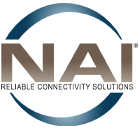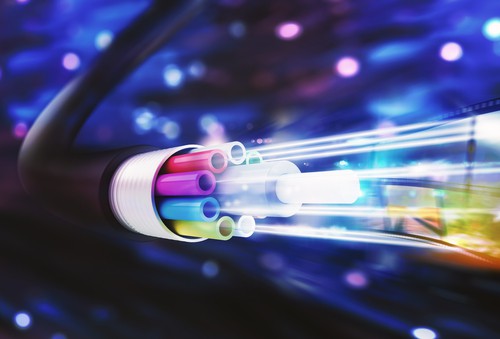
06 Oct What Is Optical Fiber Technology, and How Does It Work?
While many of us have heard the term “fiber optics” or “optical fiber” technology to describe a type of cable or a technology using light, few of us really understand what it’s all about. Here we describe the basics about fiber optic technology, how to work with it, as well as its purpose, features, benefits, and what fiber optics are used for today. We’ll explore answers to: How do fibre optics work? How do optical fibers work? And, how does fiber optics work?
Discover more about NAI Group’s Cable Assemblies for Fiber Optics
What Is Optical Fiber (Fiber Optics) Technology?
Fiber optics, or optical fibers, are long, thin strands of carefully drawn glass about the diameter of a human hair. These strands are arranged in bundles called fiber optic cables. We rely on them to transmit light signals over long distances.
At the transmitting source, the light signals are encoded with data… the same data you see on the screen of a computer. So, the fiber transmits “data” by light to a receiving end, where the light signal is decoded as data. Therefore, fiber optics is actually a transmission medium – a “pipe” to carry signals over long distances at very high speeds.
What Is Fiber Optics Used For?
Fiber optic cables were originally developed in the 1950s for endoscopes. The purpose was to help doctors view the inside of a human patient without major surgery. In the 1960s, telephone engineers found a way to use the same technology to transmit and receive telephone calls at the “speed of light”. That is about 186,000 miles per second in a vacuum, but slows to about two-thirds of this speed in a cable. So, what are fiber optics used for? In a nutshell, for signal transmission, communication and vision (video).
How Does a Fiber Optic Cable Work?
Light travels down a fiber optic cable by bouncing off the walls of the cable repeatedly. Each light particle (photon) bounces down the pipe with continued internal mirror-like reflection.
The light beam travels down the core of the cable. The core is the middle of the cable and the glass structure. The cladding is another layer of glass wrapped around the core. Cladding is there to keep the light signals inside the core.
Types of Fiber Optics Cables
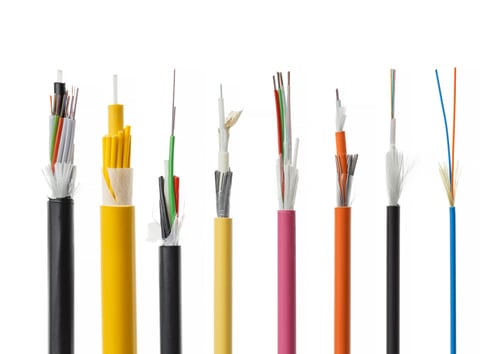
Various types of fiber optic cables
There are many types of fiber optic cables, often that end up in fiber optic cable assemblies to execute their function.
Single and Multimode Fiber
Fiber optic cables carry light signals in modes. A mode is a path that the light beam follows when traveling down the fiber. There are single mode and multimode fiber cables.
Single mode fiber is the simplest structure. It contains a very thin core, and all signals travel straight down the middle without bouncing off the edges. Single mode fiber optic cables are typically used for CATV, Internet, and telephone applications, where the signals are carried by single mode fibers wrapped into a bundle.
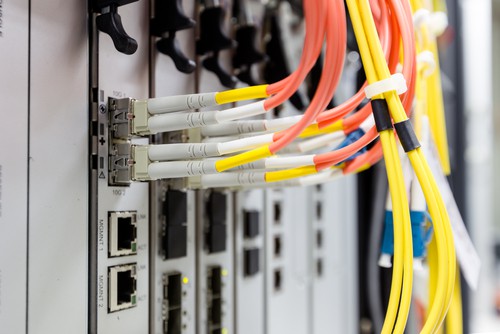
Multimode fiber optic cables are used as patch cords or “jumpers” to interconnect data equipment
Multimode fiber is the other type of fiber optic cable. It is about 10 times larger than a single mode cable. The light beams can travel though the core by following a variety of different paths, or in multiple different modes. These cable types can only send data over short distances. Therefore, they are used, among other applications, for interconnecting computer networks.
There are four types of multimode fiber optic cables, identified by “OM” (optical multimode). An industry association designated them as OM1, OM2, OM3 and OM4. They are described by ISO/IEC 11801. OM4’s standard was approved by TIA/EIA 492AAAD. Each OM has a minimum Modal Bandwidth requirement.
Plenum
In addition, fiber optic cables can be made to comply with industry standard requirements for installation in air plenums. These are used inside buildings with special materials and compounds for jacketing. Called “plenum cables,” these meet flame and toxicity requirements in the event of fire.
Simplex and Duplex Optical Fiber
Simplex fiber optic cable constructions contain a single strand of glass. Most often, simplex fiber is used where only a single transmit and/or receive line is required between devices or when a multiplex data signal is used (bi-directional communication over a single fiber).
A duplex fiber cable consists of two strands of glass or plastic
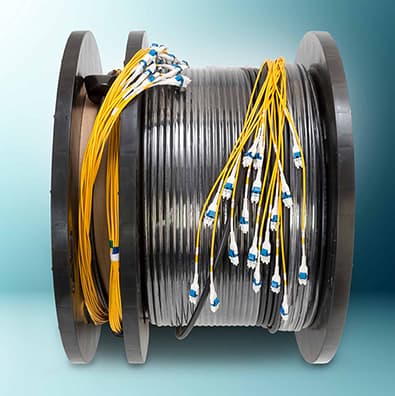
Fiber Optic Cable on Crate Reel, with Pre-terminated ends
fiber. Typically found in a “zipcord” construction format, this cable is most often used for duplex communication between devices where a separate transmit and receive are required.
Other Applications of Optical Fiber Technology
Besides plenum cable constructions, fiber optic cable assembly manufacturers create:
- “Siamese” structures (two cables side by side, each with its own jacket)
- hybrid cables (with copper cables)
- bundled and composite cable constructions that include other fiber optic, copper, or sometimes power pair cables
Shorter “patch cables” or “fiber jumpers” are used to interconnect various pieces of electronic equipment in a server room, telco closet or data center.
Uses of Optical Fiber in Our Daily Life
What are optical fibers used for? You may have seen plastic fibers carrying colored lights in decorative applications. What you may not have seen are the real glass fiber optic cables that are now the foundation of our communication and computer networks. Many thousands of miles of installed fiber optic cable carry many types of information underground, in tunnels, building walls, ceilings, and other places you don’t see. For examples of uses of optical fiber in our daily life include applications such as:
- computer networking
- broadcasting
- medical scanning
- military equipment
In recent years, other fiber optic uses have arisen. Fiber optic cables have become the backbone for MANs, WANs and LANs. There has been a trend toward “FTTX” or “Fiber to the XXXX” applications. That is, for example, Fiber to the:
- Home (FTTH)
- Curb (FTTC)
- Premise (FTTP)
- Building (FTTB)
- Node (FTTN)
Initially, fiber optic uses were primarily trunk cable lines designed to carry signals to larger populated areas. Over time, these cables have extended their reach to the home, the building, etc., giving rise to the FTTX trend.
